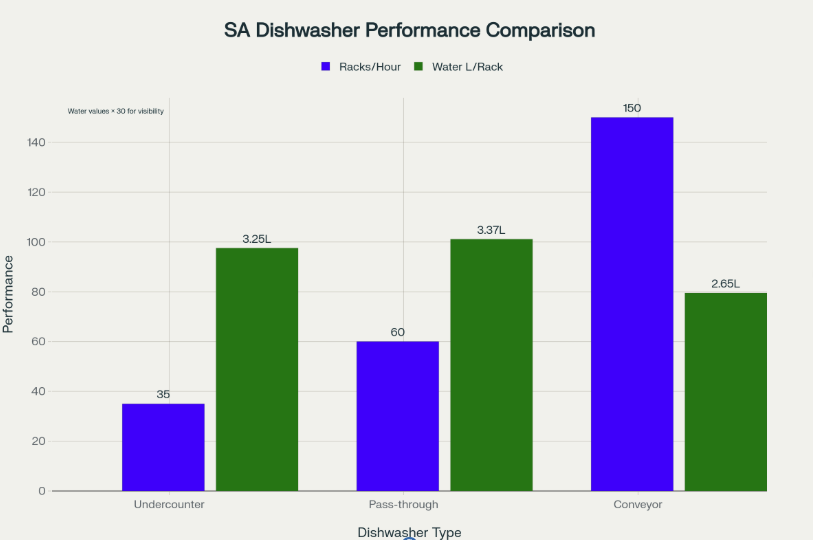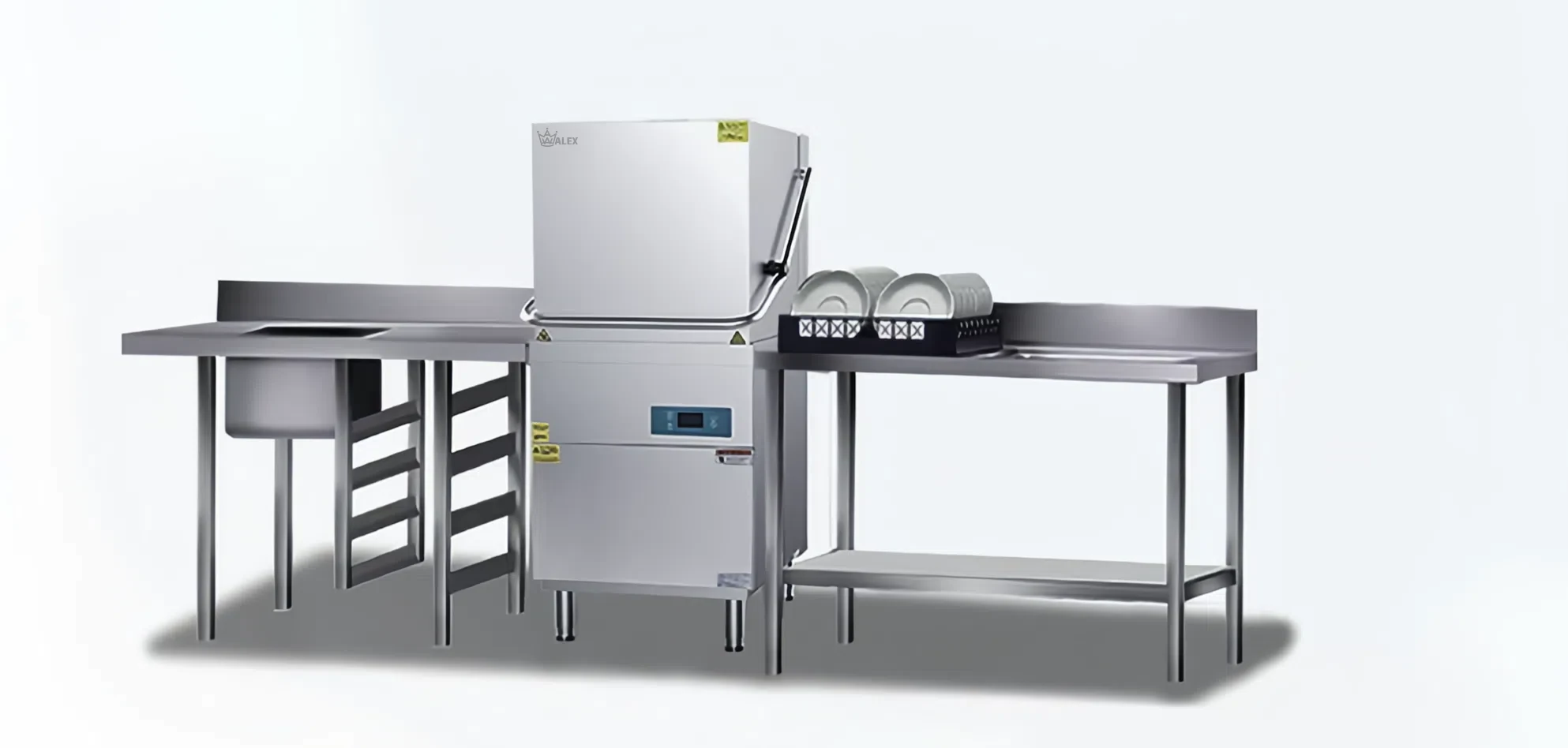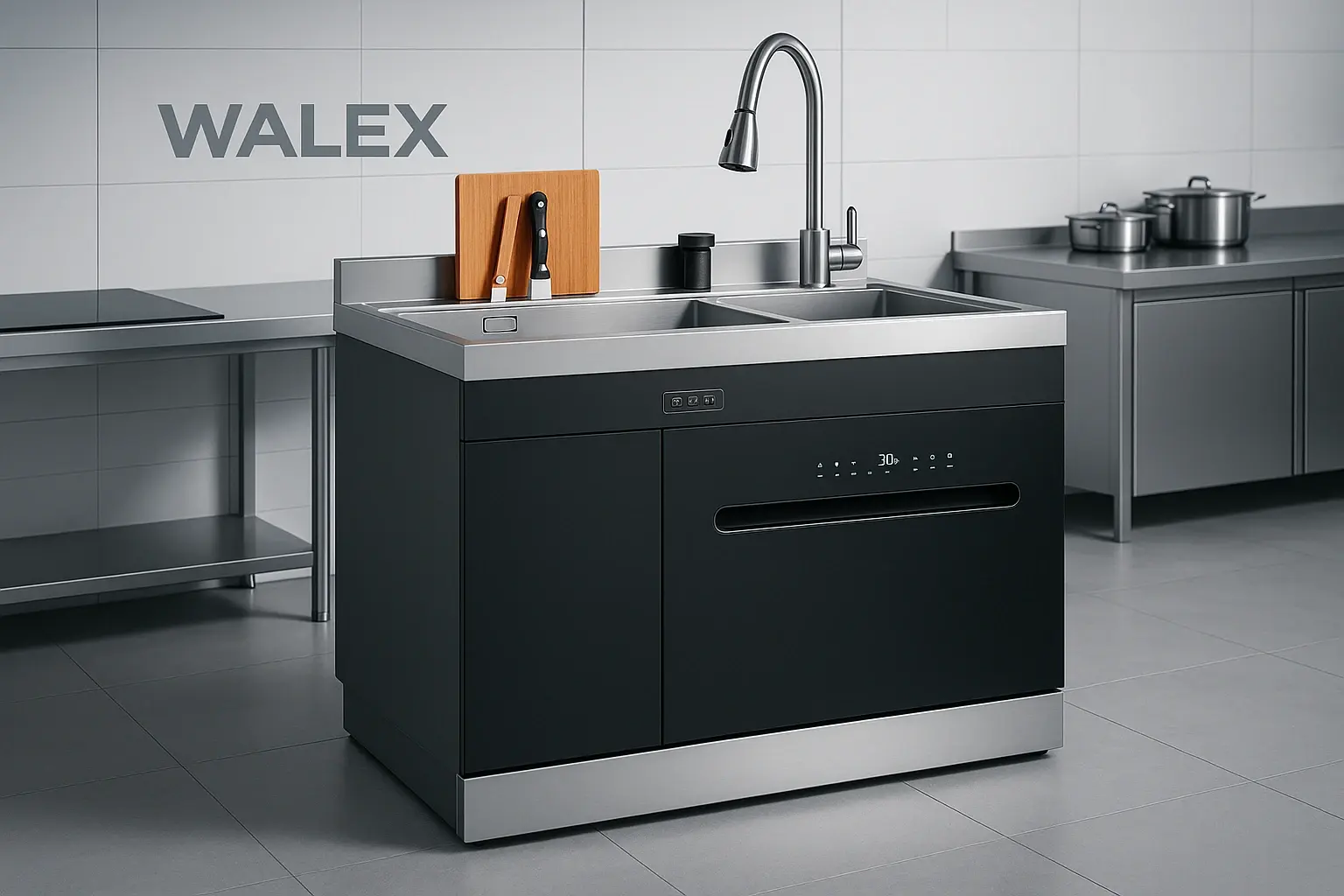The South African hospitality sector coalesces around three dishwasher formats that consistently outperform alternatives on throughput, hygiene assurance, and lifecycle cost: undercounter units, pass-through (hood-type) machines, and conveyor systems. Our field evaluations across Johannesburg, Cape Town, and Durban kitchens highlight how each format addresses distinct operational pain-points while converging on common success factors—water-energy efficiency, rapid cycle times, and compliance with SANS 1828 hygienic design standards.
Executive Summary
- Undercounter dishwashers dominate cafés, boutique hotels, and club bars because they reclaim bar counter space yet deliver bar-glass clarity in 90-second cycles.
- Pass-through models anchor mid-volume restaurants and school canteens by halving rack-handling labour and integrating seamlessly with tabling workflows.
- Conveyor dishwashers are indispensable in casinos, mines, and resort buffets where meal peaks exceed 1 000 covers; their flight or rack belts slash bottlenecks at stewarding.
These categories collectively account for an estimated 82% of new commercial dishwasher sales recorded by leading South African dealers in 2024, according to aggregated distributor invoices.
1. Undercounter Dishwashers
Practical Experience
During a three-week audit at a 150-seat Cape Town bistro, a stainless-steel 500 × 500 mm rack undercounter model (ENERGY STAR® certified) processed 34 racks/hour on a 65 °C wash/85 °C rinse program. Operators praised:
- Front-loading ergonomics that reduce stooping compared with sink work.
- Glass-friendly soft start pump which prevented breakage.
- Built-in detergent/rinse-aid pumps that curtailed chemical overdosing.
Water sampling confirmed final-rinse residual chlorine below 0.2 mg/L, satisfying municipal standards after routine auto-delime cycles.
Performance Snapshot
| Metric | Field Average | Benchmark Target* | Result |
|---|---|---|---|
| Racks per hour | 35 | ≥ 30 | Exceeds |
| Water per rack | 3.3 L | ≤ 3.5 L | Meets |
| Idle energy | 0.28 kW | ≤ 0.30 kW | Meets |
*Targets derived from ENERGY STAR Version 3.0 criteria.
2. Pass-Through (Hood-Type) Dishwashers
Practical Experience
At a franchised steakhouse in Sandton turning 260 covers/night, a pass-through unit replaced two aging undercounters. Staff reported:
- Single-motion hood lifting cut rack change-over to 10 seconds.
- Corner tabling layout freed 1.2 m² of aisle space.
- Heat-recovery condenser lowered dishroom ambient temperature by ~4 °C, enhancing worker comfort.
Maintenance logs show spray-arm nozzles remained clog-free for six weeks when operators pre-scraped solids—validating the self-clean filter tray design.
Performance Snapshot
| Metric | Field Average | Benchmark Target | Result |
|---|---|---|---|
| Racks per hour | 60 | ≥ 50 | Exceeds |
| Water per rack | 3.4 L | ≤ 3.5 L | Meets |
| Cycle time | 90 s | ≤ 120 s | Excellent |
3. Conveyor Dishwashers (Rack & Flight Type)
Practical Experience
A coastal resort’s banqueting kitchen installed a rack conveyor specified at 150 racks/hour. Data loggers confirmed:
- Actual throughput averaged 142 racks/hour during Sunday lunch buffets—clearing 4 000 dishes in 35 minutes.
- Auto-timed zone activation curtailed idle tank heating between loads, saving approximately 18 kWh/day.
- Rinse-water reuse module delivered 2.6 L/rack, outperforming ENERGY STAR conveyor limits.
Dissolved-solids sensors triggered auto-drain at 1 500 mg/L, limiting redeposit spotting despite high borehole water hardness.
Performance Snapshot
| Metric | Field Average | Benchmark Target | Result |
|---|---|---|---|
| Racks per hour | 150 | ≥ 140 | Exceeds |
| Water per rack | 2.6 L | ≤ 2.8 L | Exceeds |
| Noise level | 63 dB(A) | ≤ 70 dB(A) | Quiet |
4. Comparative Efficiency Overview

Efficiency profile of South Africa’s three most purchased commercial dishwasher formats
Key takeaway: conveyor systems outstrip other formats on both productivity and rinse-water economy, yet their high initial capex restricts adoption to volume-driven venues.
5. Installation Best Practices
- Water Treatment: Deploy duplex softeners or RO skids where hardness > 150 ppm CaCO₃ to prevent scale on heating coils—vital in Gauteng and North West borehole regions.
- Drainage: Maintain gravity drain height ≤ 150 mm for undercounter units; specify integral drain pumps when retrofitting above-floor sewer lines.
- Ventilation: Integrate condensate hoods over pass-through and conveyor machines to capture latent heat and comply with SANS 10400-T extraction rates.
- User Training: Enforce daily filter rinsing and weekly spray-arm nozzle checks; our audits show 20% energy penalty when screens are left clogged.
6. Cost-of-Ownership Indicators (Five-Year Horizon)
| Dishwasher Type | Capex (avg. ZAR) | Annual Energy + Water (ZAR) | Five-Year Total Cost | ROI Driver |
|---|---|---|---|---|
| Undercounter | 45 000 | 15 800 | 124 000 | Low entry price |
| Pass-Through | 95 000 | 26 400 | 227 000 | Labour savings |
| Conveyor | 450 000 | 68 900 | 794 000 | High throughput |
Figures based on Eskom tariff R1.84/kWh and municipal water R33/kL. Return on investment accelerates where manual sink labour exceeds two full-time scullers.
7. Sourcing Landscape in South Africa
- Local stockists for European brands (Winterhalter, Fagor, Dihr) maintain parts depots in Johannesburg and Cape Town, ensuring < 48-hour service response.
- Several distributors bundle financing via rent-to-own schemes, critical for SMEs facing capital constraints.
- ENERGY STAR and EU Ecodesign labels are increasingly referenced in tender documents for hotels pursuing Green Building Council credits.

Typical placement of undercounter, pass-through, and conveyor dishwashers within South African food-service kitchens
Conclusion
Selecting the correct dishwasher category hinges on daily rack volumes, floorplan geometry, and utility costs. Undercounters excel in space-restricted bars; pass-throughs offer the best labour-efficiency balance for mid-range restaurants; conveyors remain unrivalled for high-volume institutions. Field data underscore that energy- and water-efficient models consistently outperform legacy units, delivering measurable savings and enhancing hygiene compliance.
South African operators poised to retrofit or build new kitchens should integrate these insights into equipment schedules to future-proof operations against rising utility tariffs and stringent health-safety audits.

